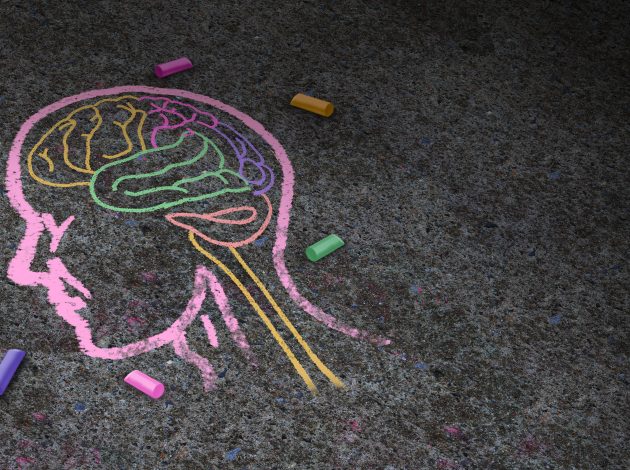Today, NHS Digital – in collaboration with the Office for National Statistics, NatCen Social Research, University of Cambridge and University of Exeter – has published research on the effect of the pandemic on the mental health of children and young people in England which you can read here. Tim Vizard reveals more about the findings and Eleanor Rees reflects on ONS’ earlier analysis of children’s well-being.
Since the onset of the coronavirus pandemic in the UK in March 2020, children and young people have experienced major changes in their lives. These have affected their family situation as well as their access to education, leisure and other services. While a number of surveys have examined what these changes have meant for adults, there has been less research on children.
Today’s study has provided a unique insight into how the COVID-19 pandemic has impacted the mental health of children and young people.
What are the findings?
Our research conducted in July 2020 showed that one in six children aged 5 to 16 years were identified as having a probable mental disorder. To put this into context, that is five children in a class of 30 children. This has increased significantly since 2017, where one in nine children were identified as having a probable mental disorder.
We also looked at the experiences of young people – 17 to 22 year olds – in July 2020. We found that young women (27%) were more likely than young men (13%) to have a probable mental disorder.
Whilst it’s not possible to say this increase is wholly due to the pandemic, our research also found four in ten 11 to 16 year olds felt that lockdown had made their life worse, whilst three in ten reported no change, and almost three in ten reported the lockdown had made their life better.
Children with a probable mental disorder were more likely to say that lockdown had made their life worse, than those unlikely to have a mental disorder. More than half of 11 to 16 year olds with a probable mental disorder said that life was worse under lockdown, this is a lot higher than those unlikely to have a mental disorder (39%).
Household circumstances during the pandemic
Our study explored the changes in household circumstances during the pandemic. Nearly half of children aged 5 to 16 years lived with a parent who had worked from home more during the pandemic, and a fifth had a parent whose working hours had increased during this period. More than one in four children had a parent in the household who had been furloughed or made use of the self-employed support scheme.
It was also revealed that about one in 12 children lived in a household that had fallen behind with payments during the pandemic. This was more common for children with a probable mental disorder (16%) than those unlikely to have a mental disorder (6%).
Childhood anxiety
Our study also explored parents’ anxieties about their child during the pandemic, finding that three-quarters of children aged 5 to 16 years had a parent who said they felt worried about their child missing out on meeting their school friends during the summer term, while more than two-thirds of children had a parent who reported feeling worried about their child missing school/work.
Comparably almost three-quarters of children had regular support from their school or college during the summer term. Children with a probable mental disorder were less likely to receive this support (63%) than those unlikely to have a mental disorder (76%).
We also asked parents about the anxieties they felt their child had about the pandemic. Over one third of children had a parent who felt their child was worried about their friends and family catching COVID-19. More than half of children with a probable mental disorder had their parent report this, compared with a third of children unlikely to have a mental disorder.
Other issues that were raised included sleep, where it was found that 28% of 5 to 22 year olds reported having had sleep problems in the past 7 days, with more girls than boys reporting them. Issues with sleep affected 17 to 22 year olds more than any other age group.
When asked about loneliness, 10% of older children and young people (11 to 22 year olds) reported often or always feeling lonely, and 43% reported hardly or never feeling lonely.
Children’s well-being
Earlier this month, we published results of focus groups with children pre-pandemic, where we discussed their well-being and views on what makes a happy life. The findings, from UK children aged 10 to 15, explored how children felt about their relationships and their wider environment
Feeling loved and having positive, supportive relationships, particularly with friends and family, including having someone to talk to and rely on were consistently stated as a top priority to have a happy life, whilst anxieties highlighted related to school pressures such as multiple exams taking place on a given day. Having a safe space to relax, de-stress from pressures, such as schoolwork, and be able to be themselves free from judgement is important for children’s well-being. Children also acknowledged that stresses around family finances could impact on the mental health of the whole household.
Strategies the children said helped them cope with emotional and mental health issues included spending times with friends, doing creative things or listening to music as well as looking after a pet or helping others. “Judgment-free zones” were also an important aspect for children to be able to be happy and confident within themselves as bullying from peers undermines their well-being.
What’s next?
Today’s study has provided a unique insight into how the COVID-19 pandemic has impacted children and young people’s lives. Hopefully these findings will shed light on children’s experiences to help the youngest in our society with their health and well-being during these unprecedented times.
Tim Vizard, Branch Head for the Mental Health of Children and Young People Survey at ONS.
